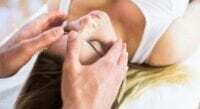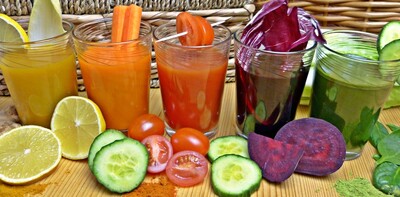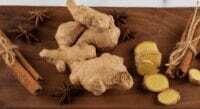
What is Panchakarma in Ayurveda?
Ayurveda, ever since its inception 5000 years ago, has been the harbinger of holistic wellbeing, pertaining to the accomplishment of optimal mind-body balance. No other practice in this ancient school of medicine testifies to this principal than the practice of Panchakarma.
Cleansing or full-body detoxification is a crucial element of Ayurveda. The Panchkarma serves this purpose by offering dietary, herbal, and yogic techniques that result in the detoxification and natural healing of our bodies.
Define Pachnakarma
Panchakarma is a combination of two Sanskrit words, ‘Pancha’ meaning five and ‘Karma’ meaning action or treatments. To define in broad terms, Panchakarma is a five-step process that galvanizes the detoxification of the human body to negate the effects of poor lifestyle choices such as an unhealthy diet, a sedentary schedule and living amidst rampant pollution.
Panchakarma aims to restore the balance between our mind and body, promote natural healing, and carefully carve out a path that leads us to optimal health and wellbeing. The practice hinges on the idea that an individual has what it takes to naturally process and remove any toxins from a body that has been victim to unhealthy choices like consumption of alcohol, fast food, or other unsavory living conditions for a very long time.
Panchakarma Treatment: Healing with Panchakarma
Panchakarma abides by the long-believed ideology of ‘prevention is better than the cure’. As such it provides the recipient with effective techniques that help curb a disease or ailment before its symptoms can fully manifest themselves in our body.
Panchakarma can also be the answer to individuals who are already afflicted by or suffering from life-threatening ailments. Panchakarma helps detect the toxins and imbalances occurring in the body and employs cleansing tactics that effectively eliminate them before they can cause any further damage.
Use Cases of Panchakarma
- Respiratory Problems like cough, asthma, and cold
- Insomnia
- Joint disorders like arthritis and gout
- Slipped discs
- PCOS and Infertility in Women
- Eczema and psoriasis
- Addiction, Anxiety, and Depression
- Gastro-Intestinal Problems
- Paralysis and age-related disorders
Revitalizing the Body and Mind through Panchakarma Therapy
We have already mentioned how Panchakarma literally translates to ‘Five Actions’, which signifies the 5-step action plan prescribed by it to restore and rejuvenate human health. In Panchkarma, the body is divided into 5 different sections, each being catered with a form of treatment which is unique to that section. The main focus is on the head and the upper and lower gastrointestinal tracts.
Effective 5 steps of Purvakarma
What is Purvakarma in Panchkarma treatment
Before the body can undergo a full detoxification process, several measures need to be taken in order to encourage the body to let go of toxins. Purvakarma prescribes the pre-purification measures that can prepare the body for the main detoxification process. To put it simply, Purvakarma is required to prepare an individual mentally and physically for the actual detoxification process.
Purvakarma involves the individual going through the following measures
1. Digestion for Complete Detoxification: The Pachan Karma Step
This includes fasting and consuming herbs that enable the individual to digest ghee (clarified butter), which is responsible for dissolving fat-soluble toxins.
2. Snehan (Oleation Therapy): Preparing the Body for Detoxification
Snehan includes an oil massage, wherein oil is rubbed on the entire body in order to push the toxins towards the gastro-intestinal tract. Snehan can also help in removing stress and nourishing the nervous system. Snehan is administered for a period of three to seven days.
3. Svedana (Sudation Therapy): Opening the Pores for Detoxification
Svedana means sweating and is administered right after Snehan. The steam administered in Svedana helps liquefy the toxins in the body and push them towards the gastrointestinal tract.
After almost three to seven days of the body undergoing Snehan and Svedana, the doshas become well ripened. Only then can one proceed to the main section of the Panchakarma process.
4. Pradhan Karma
Pradhan Karma signifies the main aspect of the Panchkarma process. As such, it is highly recommended to be done only under the supervision of a certified Ayurvedic Practitioner. The process is prescribed and customized according to an individual’s age, health, immunity and other curative needs. All of the above factors require thorough evaluation before the body is put through the cleansing process.
Exploring the 5 Therapeutic Steps of Panchakarma
1. Vamana: Purifying the Body Through Therapeutic Emesis
Vamanafocuses on the congestion of lungs, which is evident by cases of cold, cough, bronchitis, asthma and other respiratory ailments. It prescribes measures that include therapeutic vomiting to release the excess mucus causing the congestion.
The elimination of excess mucus can also result in the release of excess Kapha, and repressed emotions associated with Kapha in different parts of the lungs and stomach.
If Vamana is undertaken appropriately, then the individual will feel instant relief when the mucus is eliminated, with symptoms like wheezing, and breathlessness subsiding to promote comfortable breathing. The individual will gain a clear voice, clarity of thought, a good appetite and other benefits.
After undergoing the process of Vamana, it is recommended to rest, fast and not suppress any natural urges such as the urge to urinate, defecate, sneeze and cough.
2. Virechan: Detoxifying the Body Through Purgation Therapy
Ayurveda recommends tactics such therapeutic purgation in cases of rashes, skin inflammation, acne, nausea and jaundice. Such symptoms can occur when excess bile or pitta is secreted and accumulates in the gall bladder, liver or small intestine unchecked.
Therapeutic purgation can counter the effects of excess bile accumulation by quickly releasing it from the body. It is recommended that the individuals who are under the administration of purgatives refrain from having food that might cause the three humors of the body to become unbalanced.
3. Basti: Restoring Balance through Enema Therapy
Vata is considered to be at the center of a majority of diseases plaguing the human body. As such, finding a way to control Vata in the body is a surefire way to maintain the health of our body and mind at optimal levels. Vata is mainly found in the large intestine and bone tissues. Administration of therapeutic enema rectally can motivate the elimination harmful toxins, and control the Vata levels in our body.
4. Nasya: Clearing the Head and Respiratory System through Nasal
The nasal administration of ayurvedic medication is what is basically known as Nasya in Panchakarma. The nasal passage is known as a doorway to both the brain and consciousness in the human body. As such, most toxins present in excess in the sinuses, nose, head or throat can be eliminated via Nasya.
Nasyaalso helps in regulating the inward and outward flow of prana, an element that enters through our nose and is responsible for sensory and motor functions. Insufficient pranacan cause problems such as loss of memory, reduced sensory perception, headaches, convulsions etc.
Nasal administration or Nasya can take care of the above ailments, along with other issues such as migraines, sinus congestion, eye and ear problems etc. Nasya can also help in improved breathing. Techniques such as slowly massaging the inner walls of your nose with a finger dipped in ghee, is a great way of accomplishing just that.
The finger shouldn’t be inserted forcefully and it should move slowly, first clockwise and then anti-clockwise for best results without causing any harm to the inner walls of your nose. This treatment can be administered regularly every morning and evening.
5. Rakta Mokshana: Purifying the Blood through Bloodletting Therapy
Toxins that find their way into your system are absorbed into the blood and spread around the entire body. Therefore blood purification is a crucial part of detoxifying your body completely. If left unattended, these toxins in the blood can lead to severe ailments like hypertension, consistent infections, herpes, rashes, eczema, leukoderma and other benign and chronic diseases.
An increase in pitta can also result in the further decimation of blood. Methods like bloodletting or relieving the system of small amounts of blood can help the body manage the toxicity caused by excess pitta in the blood streams.
Other than bloodletting, other rakta moksha methods such as administration of certain herbs, color water therapy and gem therapy are also effective methods to purify one’s blood. For rakta moksha treatment to be effective, it is imperative to refrain from consuming salt, sugar, alcohol, fermented foods, and marijuana.
Dietary and Lifestyle Recommendations
While following panchakarma, it is imperative to follow certain key dietary and lifestyle guidelines recommended by Ayurveda. They are as follows:
- Get ample amount of rest
- Avoid strenuous activities like engaging in sex, exercise,
- Avoid Indulging in music and television
- Keep warm and stay away from the wind
- Take note of your thoughts and experiences while in the process.
- Avoid caffeinated sugary drinks, fast food, drugs, alcohol and processed food
- Try to indulge in a mono-diet of kitchari and ghee
Following the above diet is crucial as your digestive power aka agni goes into rest when undergoing the panchakarma process. Having kitchari with ghee is a good way to further the goals of detoxification and provide your body with the nourishment it needs.
You should follow this cleanse if;
- You have the will to carry out a deeper cleansing process
- You have the strength needed to carry out such an intense cleansing program
- You seek the best results out of your cleansing process
- You have the time needed to dedicate yourself to the cleanse
Refrain from this Cleanse if;
- You are extremely weak and debilitated
- You are pregnant and breastfeeding
- You are old
- You suffer from chronic ailments
- You suffer from severe bleeding disorder
- You don’t have a qualified Ayurvedic practitioner.
Final Thoughts
Panchakarma is a complex Ayurvedic procedure and should be undertaken only under the supervision of a certified Ayurvedic Practitioner. The process will differ from individual to individual. Panchakarma, especially in the age and time we live in, is extremely important in charting a course towards optimal health.
It helps restore and rejuvenate the mind and body via the practice of natural full body cleansing, and thus helps the body get rid of harmful toxins, ama, and free radicals. It is one of the best methods out there to accomplish holistic wellbeing and finding health and happiness in a life you desire to live.
Note: The information in this article is intended for your educational use only and is not a substitute for professional medical advice, diagnosis, or treatment. Always seek the advice of your physician or other qualified health providers with any questions you may have regarding a medical condition and before undertaking any diet, supplement, fitness, or other health programs.






